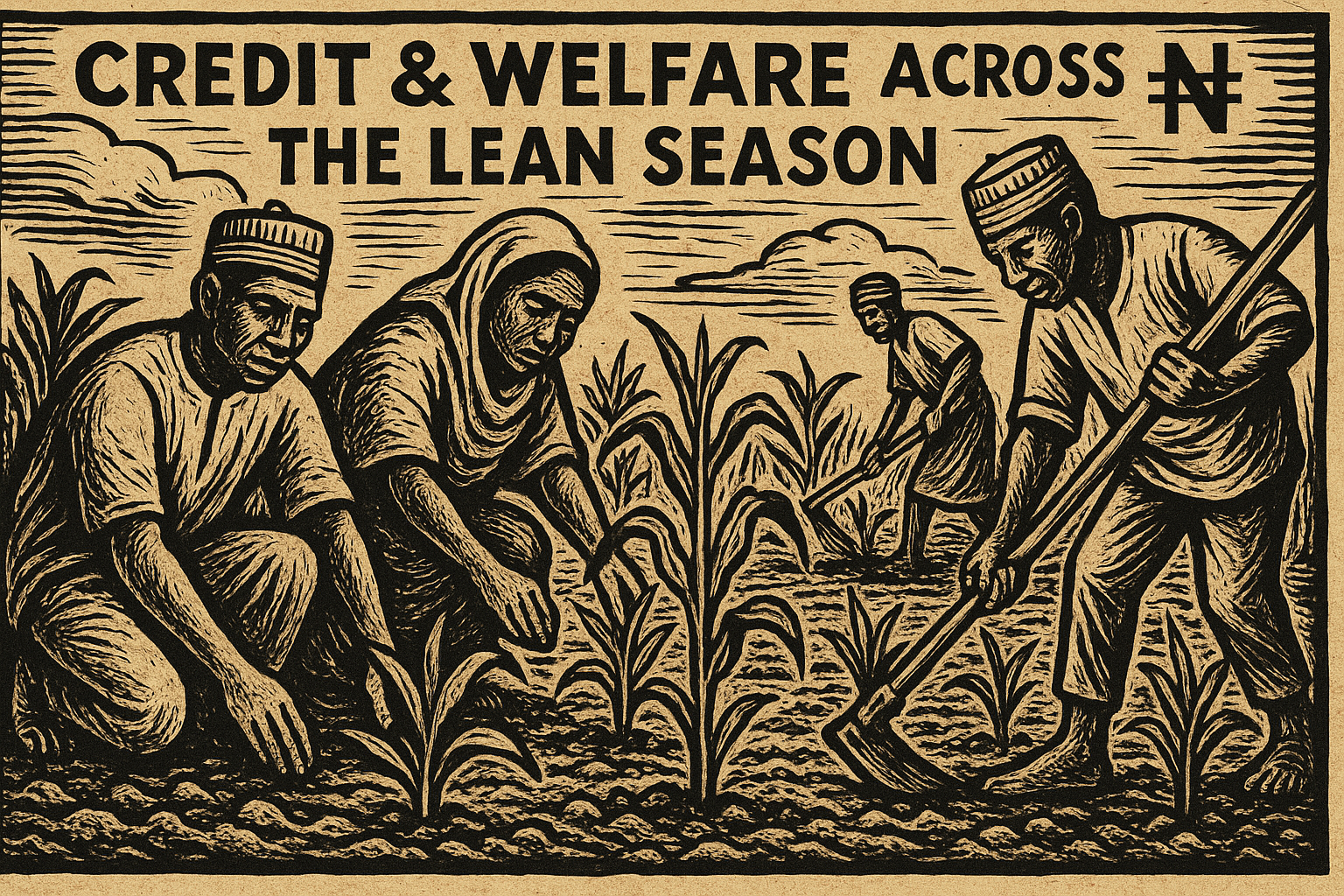
Download
Abstract
Consumption in rural areas of low-income countries is often highly variable across seasons. What drives this seasonality, and can the welfare of households across the “lean season” be improved via the provision of credit? We measure prices and consumption for farm-households across seasons in Gombe, Nigeria, and at the same time elicit information about farmers’ intertemporal marginal rates of substitution by offering them one-month bonds with different rates of return. Against this background, we also implement a randomized post-harvest loan (PHL) program, which provides credit—up to a generous ceiling—at a subsidized interest rate. Farmers randomly offered the loan almost universally borrow the maximum amount. In this experiment, we find that treated farmers store more grain. This is a risky investment, and in the year of our experiment it did not pay off, as maize prices did not increase following the harvest. Given this, it is unsurprising that we find no significant effects of the loan on consumption, investment or welfare—using the PHL to make a leveraged bet on maize prices going up was bad investment ex post. Was it a bad investment ex ante? This depends on whether lean seasons are due to poorly functioning financial markets in Gombe, or because markets in Gombe are poorly integrated with the broader market. We adapt tools from the asset pricing literature to our data to test the null of well-functioning local financial markets in Gombe. We fail to reject this null hypothesis, suggesting that promoting spatial integration may improve lean-season welfare more than the local provision of credit would.
BibTeX
@Unpublished{ligon-silver25,
author = {Ethan Ligon and Jedidiah Silver},
title = {Credit and Welfare Across the Lean Season},
year = 2025,
url = {https://escholarship.org/uc/item/81k9j2q0}}